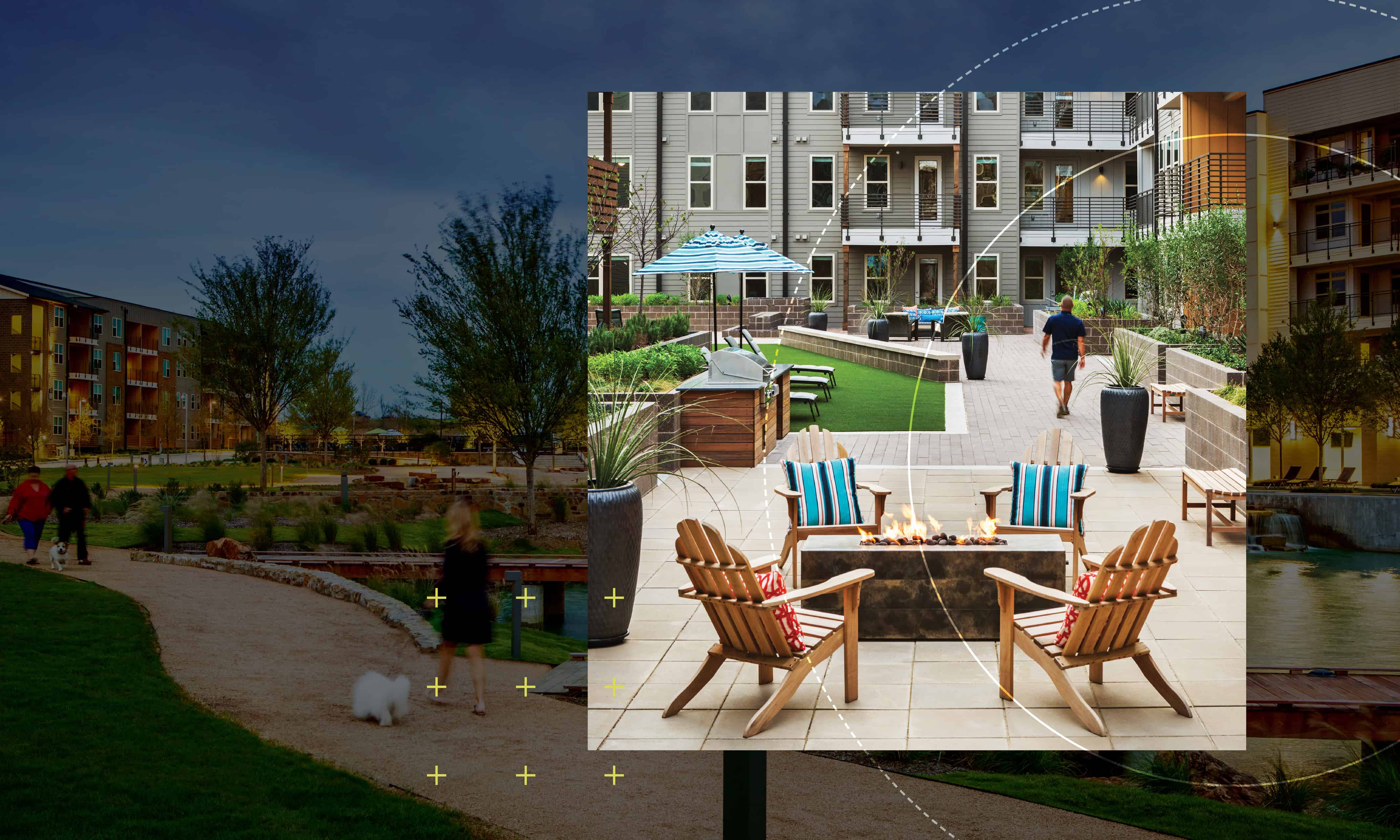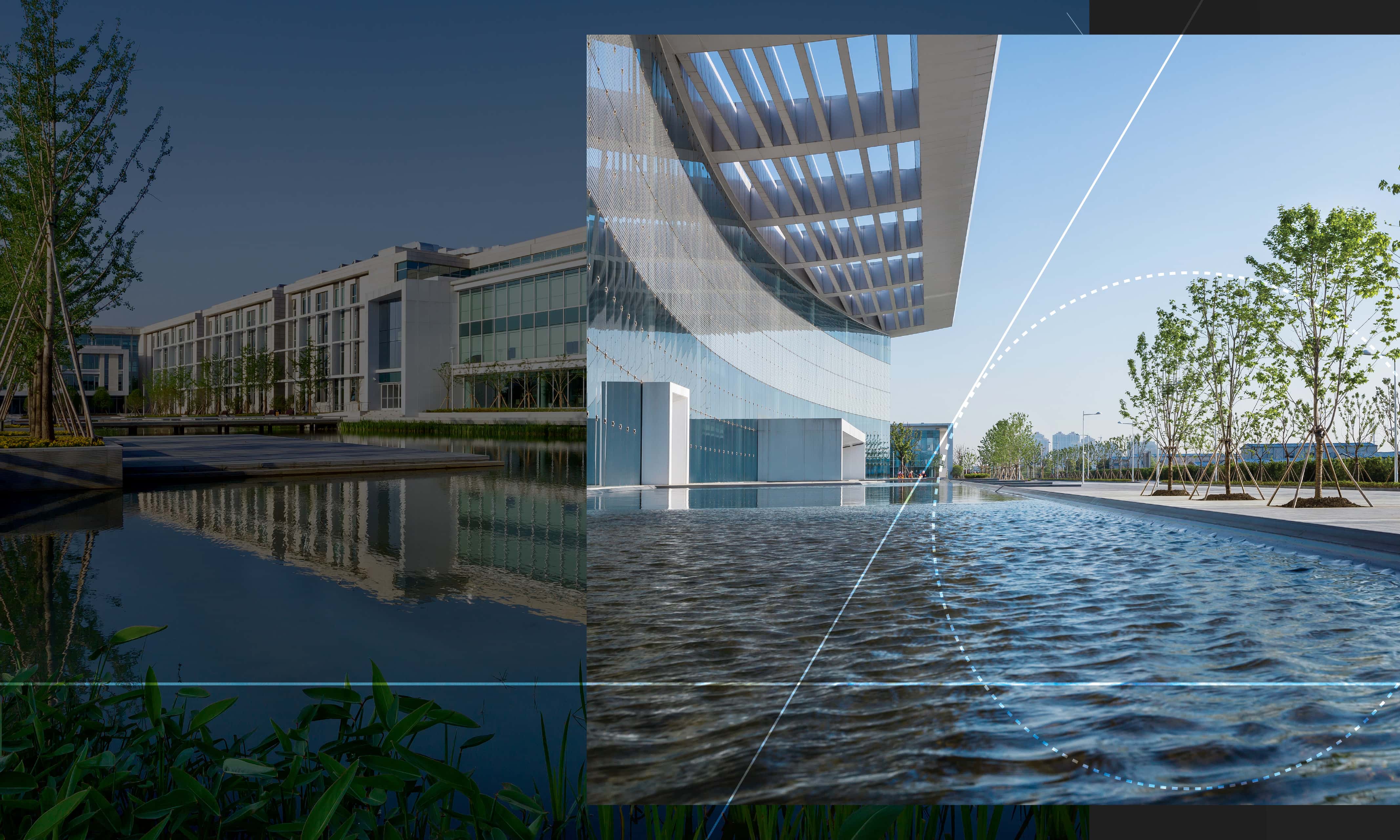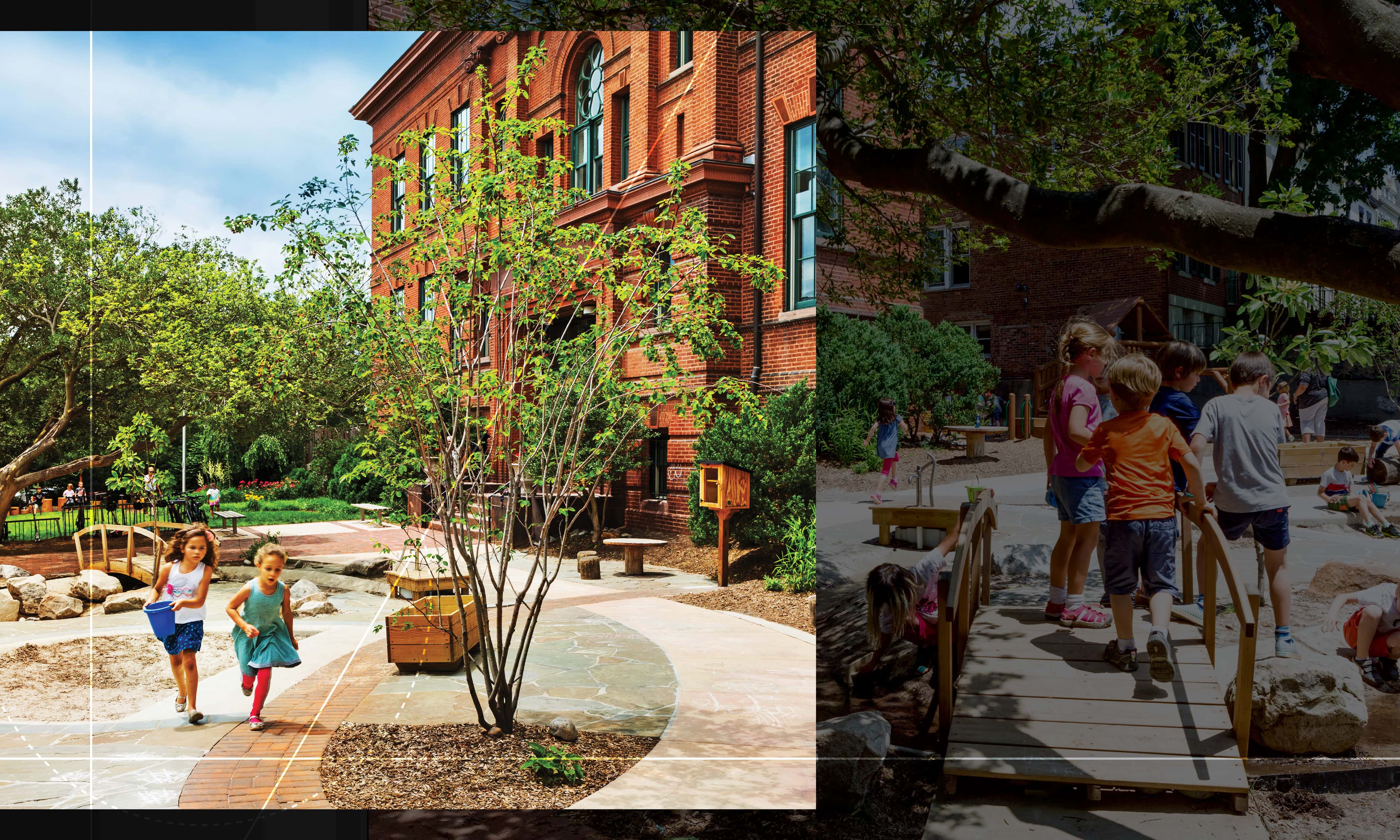By: Stephanie Roa, LA Designer. Originally posted on DeepRoot.
Cities are generally both warmer and more polluted than non-urban areas, as paved surfaces absorb heat, leading to increased energy consumption, and vehicle and human activity produces waste and airborne particulate matter. These have huge negative consequences for human health, but a dense urban tree canopy can help reduce these risks. The role trees play in making cities livable is well documented, and the increased recognition of the multiple benefits provided by trees has helped spur active planning and management for a healthy urban forest. But where to plant so as to provide the most benefits while efficiently using resources?
A recent study, “Where to plant urban trees? A spatially explicit methodology to explore ecosystem service tradeoffs,” a collaboration between the SUNY Department of Environmental Resources Engineering, the USDA Forest Service Northern Research Station, and The Davey Institute, and published in September 2016 by ScienceDirect, aimed to determine areas of high-priority for future tree planting across Baltimore, Maryland. The study explores strategies for tree planting by comparing the benefits and tradeoffs of five different planting scenarios. Each scenario focused on optimizing the benefits provided by trees, especially the role they play in mitigating heat island effects and removing air pollution. Developed to meet the city’s Baltimore Sustainability Plan goal of establishing 40% tree cover by 2037, the findings will be used by the city to develop a strategic planting strategy.
To learn more about the study, I spoke with Ethan Bodnaruk, environmental and geotechnical engineer at Atlantic Testing Laboratories, and co-author of the study (other authors include C.N. Kroll, Y. Yang, S. Hirabayashi, D.J. Nowak, and T.A. Endreny). Ethan previously worked as a research and teaching assistant at SUNY Department of Environmental Resources Engineering while receiving his Masters of Ecological Engineering. Here’s what he had to say.
In your study, you explore the benefits of urban tree planting. What are these benefits and why is a healthy and maintained urban tree canopy important?
We might not often think about all the things trees do to make our cities more enjoyable and beautiful places to live. They shade our urban surfaces like pavement that would otherwise soak up a lot of heat, and they further cool the local environment through evapotranspiration. It’s like they act as mini air conditioners when they “breathe in” carbon dioxide and “exhale” water through their stomata. Trees play an important role in efforts to reduce stormwater runoff that can pollute our local water bodies. Trees also remove small amounts of air pollutants either through direct gaseous uptake or by deposition of particles to leaf surfaces, known as dry deposition.
Trees, of course, can also provide food to us humans, as well as food and shelter to a variety of wildlife. There are too many benefits of trees to list, and many are very hard to quantify such as those related to aesthetics or beauty, stress reduction, and other cultural services. So it’s important to maintain our urban forests, and as some have pointed out, urban forests and urban green spaces can be the primary day-to-day experience of “nature” for many city dwellers.
In the academic literature, the concept of ecosystem services captures and describes the benefits of trees. Ecosystem services are organized in broad categories of cultural services, provisioning, regulating, and supporting services.
Why did you choose Baltimore, Maryland as your area of study?
I chose Baltimore for many reasons. One is that there was a lot of previous research done there on a broad range of related topics through the National Science Foundation’s long-term social ecological research (LTSER) project in Baltimore. For instance, much research had gone into quantifying the city’s heat island effect, quality of urban streams and the Chesapeake Bay, and exploring social and environmental inequalities. Our research partners at the US Forest Service had also focused on Baltimore in the past. Finally, Baltimore has a sustainability plan that includes a goal of establishing 40% tree cover by 2040, so that goal provided a useful constraint or parameter for my tree cover modeling work.
Tell me more about your methodology. How did you utilize i-Tree models and other available resources?
I utilized i-Tree models that quantify the air pollution removal performed by trees, avoided health outcomes due to reduced pollution, and estimates of the monetary value of the avoided health outcomes. The health outcome side of things is calculated from an EPA model called BenMAP, which stands for Benefits Mapping. Another i-Tree model estimates temperature and humidity across Baltimore based on land cover (proportions of trees, asphalt, short vegetation, etc.) given the recorded weather conditions from a weather station. By then changing the land cover (adding more trees) I could investigate the location-specific effects of tree cover on temperature and humidity. I then wanted to find priority locations for tree planting based on these pollution and temperature effects (more on that later).
You can imagine that a lot of data is required as inputs to these models. The US Forest Service completed an urban tree canopy assessment project in which high-quality aerial imagery was taken and processed to create land cover maps rich in data. This high-resolution imagery quantifies different types of land cover such as trees, grass, and different kinds of impervious surfaces. It was very important for our work, as well as spatially explicit US Census data, which provides information not just about overall population, but where people live and basic demographic data such as age. This type of data is needed for the health benefits. We also utilized other land cover data from the National Land Cover Database (NLCD). Estimates of fine particulate pollution (called PM2.5) and ozone were also obtained for Baltimore from the EPA.
You mention in the report that your main goal is to determine areas of the city where planting should be prioritized, and existing tree cover should be protected or maintained. What factors did you consider to determine which areas to prioritize?
Really the main goal of the work is to create a tool that communities can themselves use to determine priority areas for planting, weighing and considering a wide range of factors. My work was a first step in creating the first few pieces of such a tool and testing it out.
In this initial work, I focused on the air pollution removal and temperature mitigation (cooling) effects of trees. So we wanted to look at where trees can remove the most air pollution, where they can best reduce air pollution burdens for people in particular, and locations where trees are most needed to reduce extreme temperatures.
One consideration was to be aware and explicit through the modeling itself that there can be a big difference between where the hottest and most polluted locations are versus where people who can experience the benefits of mitigation are. That’s why we needed Census data to know where people are, and also demographic data because we know that the elderly and very young are more susceptible to extreme heat, for instance. Also, we experience heat stress through a combination of temperature and humidity so I used a metric that combines these (the heat index) to explore priority locations for tree planting.
Your report detailed five different “priority planting “scenarios. Can you briefly describe them and the different benefits they explored?
I created different planting scenarios that:
Maximized air pollution removal,
Maximized human benefits of air pollution removal,
Prioritized plantings based on locations with the worst heat index (combination of temperature and humidity)
Prioritized plantings based on a combination of the worst heat index, population size, and relative risk due to age (elderly and very young)
Prioritized plantings based on a combination of the previous point plus the modeled effectiveness of trees in reducing the heat index.
One point I wanted to make was that tree planting priorities could be very different even using the same model and general ecosystem service depending on how you set it up and what exactly is the focus, for instance, air pollution in general or air pollution in populated areas.
Which tree-planting scenario proved to be most beneficial to the city?
This is a very difficult question to answer for many reasons, including the limitations of our models, data, and the subjective or multi-faceted nature of the values and benefits associated with trees.
What we were aiming for is to create tools and approaches that city planners and other people can use to explore planting schemes based on multiple priorities and metrics. Where high priority locations overlap across several different metrics or priorities, we could say synergies are present. In locations where they do not, there are tradeoffs between different services or priorities. We want to use science and mathematical models to supplement local knowledge of where we need more green space, where issues of concern can be addressed, and so forth.
What results were unexpected and what factors may have altered your findings?
One thing that was surprising was that there were very few air quality monitors in Baltimore, so much of the data we used was interpolated and otherwise estimated using statistical techniques. I would have thought in a city its size with known industrial pollution sources there would be many more monitors that could capture the spatial variations across the city. This lack of monitors led to data that we knew underestimated peak pollution and predicted only very small differences in pollution levels across the city. This fact led to consider other locations with more robust data for future work, such as New York City.
The urban core of the city generally showed to be the area where trees had the highest monetary benefit of pollutant removal, however, these areas often have limited available space for tree planting. What strategies could increase planting in this area?
In terms of modeling where new potential tree cover could go, I used the simplification that impervious areas such as buildings and roads would not be replaced by tree cover. To a certain extent, this makes a lot of sense because people would laugh at a model that says to tear down buildings or get rid of roads to obtain more benefits from trees. We basically assumed that any land with bare soil or grasses could potentially be turned into tree cover.
Downtown areas are of course mostly buildings and roads so there is not much of what we defined as “potential plantable” area either according to the assumptions used in the model or in real life. But for future work, we wanted to utilize map-based data that includes estimates of how much paved surface area could be removed and replaced with trees. We generally know that removing impervious surfaces where and when possible and replacing them with green space is good across many different types of ecosystem services. It’s often possible to squeeze some trees into parking lots, or remove portions of sidewalks for trees.
Of course, local communities and people who have direct experience in their locale would know much more about such “potential impervious plantable” areas than a modeler who doesn’t live in the area. So that’s why we ultimately want to gear the tools toward the people who can use them combined with local knowledge.
What further work would you hope to study in order to supplement your data?
There are many avenues for further work. In the paper, I summed it up this way: With further development including consideration of additional ecosystem services, disservices, user input, and costs of tree planting and maintenance, this approach could provide city planners, urban foresters, and members of the public with a powerful tool to better manage urban forest systems.
In what ways do you hope your work will impact the future?
I hope this work will continue to raise awareness about the importance, and benefits of, green spaces in urban areas. One encouraging story I heard about the impact of i-Tree models in Baltimore was that engaged citizens and community groups used the models and their results to get a larger urban forestry budget. Results that indicated benefits of trees significantly outweighed the costs of planting and maintenance went a long way in the tight fiscal environment that many cities face.
To learn more about the research presented here, download the entire study on ScienceDirect. To see what else Ethan is researching, including topics of composting, science and spirituality, visit his blog at www.ethanbodnaruk.com.



